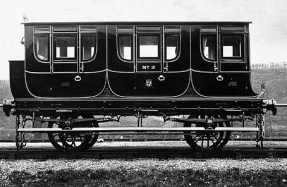The Euston Arch
A mid-Victorian Chairman of the Great Northern Railway was reputed to have commented that there was no money in stations. True enough, GNR stations were generally of more austere design than say contemporary Midland Railway ones. This attitude persisted among some senior railway managers well into our own time and Sir Peter Parker had an uphill task in successfully changing attitudes. As well as the Railway Heritage Trust, established in 1984, Sir Peter supported the infant Best Restored Station Competition, now fully fledged and widely regarded in the industry as the National Railway Heritage Awards; indeed he presented the awards for its first four years and his successors as Chairman of BR and its successors have been pleased to follow suit. It has become abundantly clear over the past few decades that the travelling public does appreciate decent railway stations: there is ‘money in them’!
In his perceptive article on the fate of the old Euston station (August) Geoffrey Skelsey draws out two salient points. The first is that no matter how much the so-called cultural ‘great and good’ might bleat and demand to ‘go to the top’ (I could see a dusty answer from Harold Wilson - ‘The white heat of the technological revolution’ - and an even shorter one from Margaret Thatcher), if railway operational managers are not behind a restoration or preservation scheme it will not make progress. Going from this, some compromise is bound to be required, whether in what can or should be retained, what could be adapted and what has to be demolished. The rebuilding and re-ordering of London Bridge is a good case in point. Looking at the aerial picture of Euston station and its surrounds in 1946 (p469) it is quite clear that any




